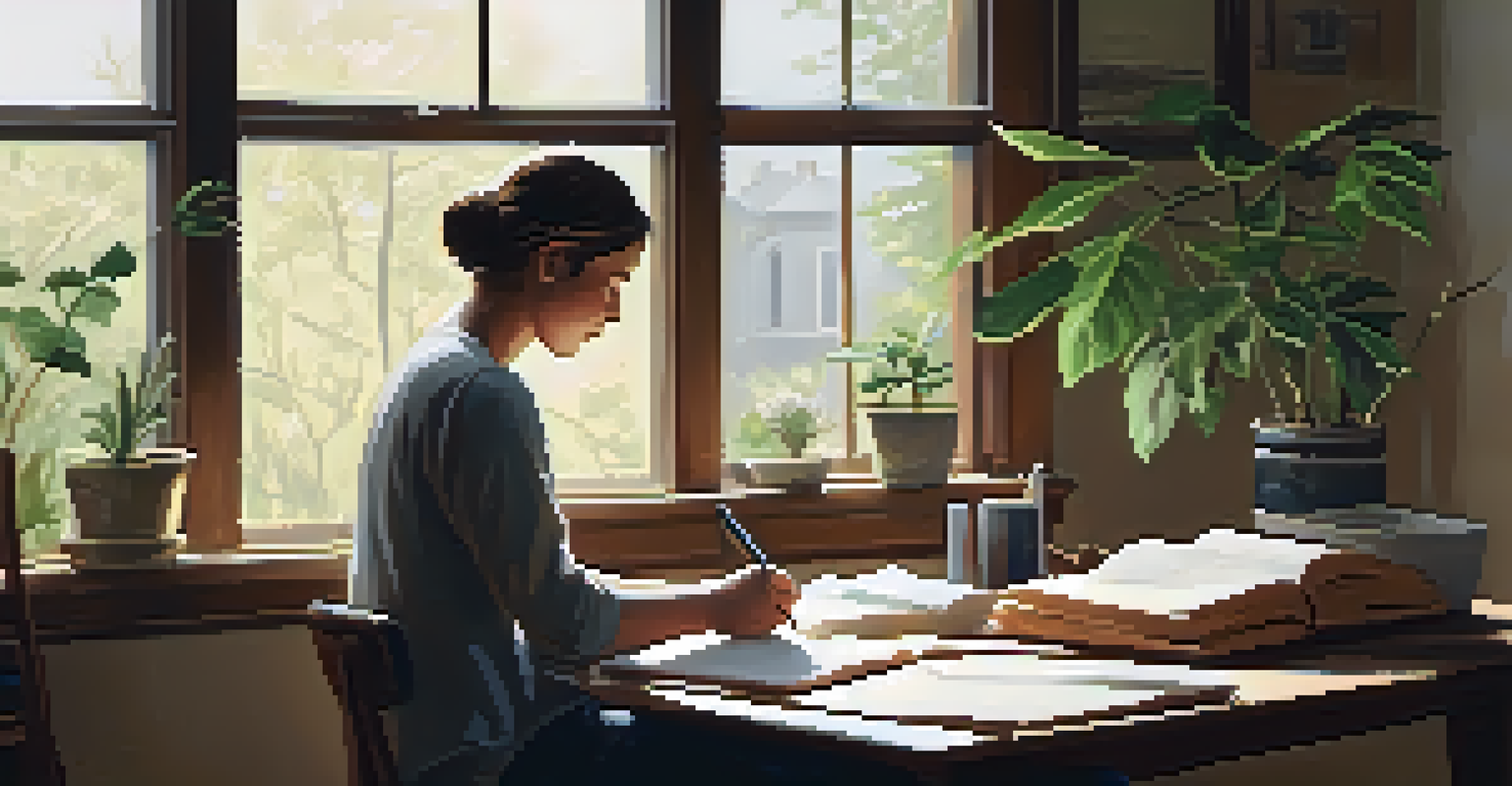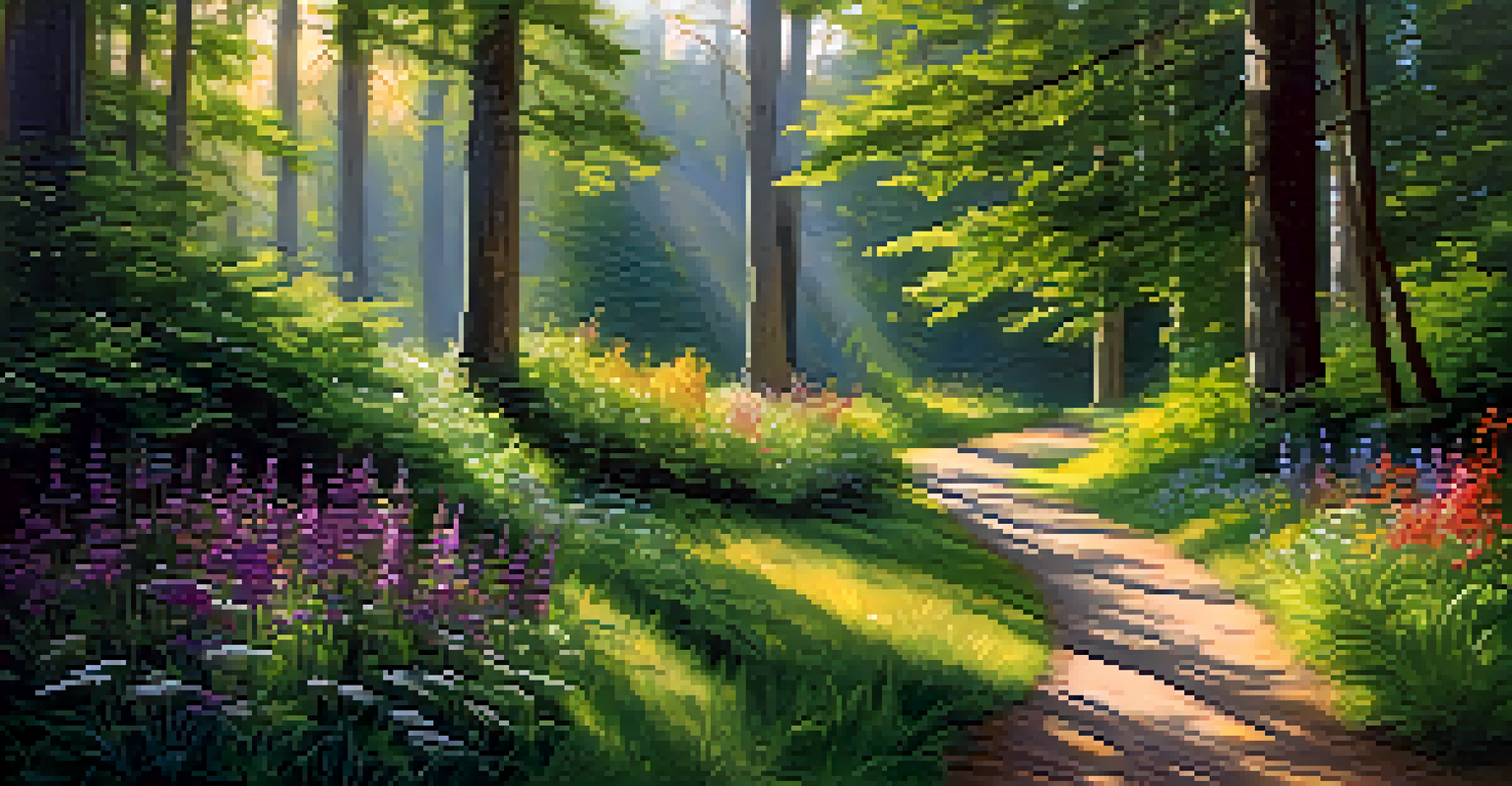How to Use Mindfulness to Enhance Your Creativity

Understanding Mindfulness and Its Benefits
Mindfulness is about being fully present in the moment, observing thoughts and feelings without judgment. This practice allows us to step back from the chaos of daily life and cultivate a sense of calm. By focusing on the here and now, we can create a mental space that fosters creativity.
Mindfulness isn’t difficult. What’s difficult is to remember to be mindful.
When we engage in mindfulness, we learn to quiet the noise of our busy minds, which often stifles our creative flow. This clarity can lead to innovative ideas and solutions that may have previously eluded us. Essentially, mindfulness acts as a reset button, allowing us to approach challenges with fresh eyes.
Moreover, practicing mindfulness regularly can enhance emotional resilience, making it easier to cope with creative blocks. The more comfortable we become with our thoughts, the more open we are to exploring new ideas without fear of judgment.
Creating a Mindfulness Routine for Creativity
To harness the power of mindfulness, it's essential to establish a routine that fits your lifestyle. This could be as simple as dedicating ten minutes each morning to meditation or engaging in mindful breathing exercises. Consistency is key—find a practice that resonates with you and stick with it.

You might also consider incorporating mindfulness into your creative process. For instance, take a few moments to breathe deeply before starting a project, allowing your mind to clear and focus. This can set a positive tone for your creative work and open the door to new ideas.
Mindfulness Boosts Creativity
Being present in the moment allows for clearer thinking and fosters innovative ideas.
Experiment with different mindfulness techniques, such as journaling or mindful walking, to discover what sparks your creativity. The more you explore, the better you'll understand how mindfulness can enhance your unique creative expression.
Using Mindfulness to Overcome Creative Blocks
Creative blocks can feel frustrating, but mindfulness offers effective strategies to break through them. When you encounter a block, take a moment to pause and observe your thoughts without judgment. This simple act can help you identify what's hindering your creativity and allow you to address it more effectively.
Creativity is the way I share my soul with the world.
Try practicing mindful breathing to calm your mind and refocus your energy. Inhale deeply for a count of four, hold for four, and exhale for four. This rhythmic breathing can soothe anxiety and create a mental environment where ideas can flourish again.
Additionally, consider reframing your approach to failure through mindfulness. Instead of seeing setbacks as dead ends, view them as opportunities for growth—this perspective shift can unlock new creative pathways.
Incorporating Mindfulness into Creative Activities
Mindfulness can be seamlessly integrated into various creative activities, enhancing both the process and the outcome. Whether you're painting, writing, or crafting, try to immerse yourself fully in the activity at hand. This focused attention can lead to deeper insights and richer creative expressions.
For example, if you're writing, take a moment to appreciate the sensation of the pen on paper or the sound of the keyboard beneath your fingers. Engaging your senses in this way can heighten your creative experience and spark new ideas.
Routine Enhances Mindfulness Benefits
Establishing a consistent mindfulness practice can help unlock creativity and overcome blocks.
Remember, the goal isn’t just to create something but to enjoy the act of creating itself. By staying present and engaged, you may discover unexpected joys and insights that can elevate your work.
Mindfulness Techniques to Spark New Ideas
There are several mindfulness techniques specifically designed to inspire creativity. One effective method is visualization, where you imagine yourself in a serene setting that stimulates your imagination. This mental imagery can open the door to fresh ideas and perspectives.
Another technique is the practice of free writing, where you write without any constraints or judgments for a set period. This exercise can help clear your mind of clutter and reveal hidden thoughts and ideas that may lead to creative breakthroughs.
Lastly, engaging in mindfulness-based art activities, like doodling or coloring, can also help spark creativity. These activities allow your mind to wander freely while still being engaged, often resulting in unexpected creative insights.
The Role of Nature in Mindfulness and Creativity
Spending time in nature is a powerful way to enhance mindfulness and, in turn, creativity. Nature has a unique ability to calm our minds and inspire innovative thoughts. Just a short walk in a park can rejuvenate your spirit and stimulate your imagination.
When you're outdoors, take a moment to observe your surroundings—notice the colors, sounds, and textures around you. This sensory engagement can heighten your awareness and boost your creative thinking.
Nature Inspires Creative Thinking
Spending time outdoors can rejuvenate the mind and enhance creative inspiration.
Incorporating nature into your mindfulness practice can also involve mindful gardening or simply sitting in a natural setting. These practices allow you to connect with the environment, fostering a deeper sense of inspiration and creativity.
Combining Mindfulness with Daily Life for Creativity
Integrating mindfulness into your daily routine can significantly enhance your overall creativity. Simple practices, like mindful eating or mindful commuting, help cultivate awareness in everyday tasks. This heightened awareness can lead to a more creative mindset throughout your day.
For instance, while eating, savor each bite and pay attention to the flavors and textures. This practice not only makes meals more enjoyable but can also help you cultivate a mindset of appreciation and curiosity, which are key drivers of creativity.

Moreover, by applying mindfulness to mundane tasks, you can turn everyday moments into opportunities for creative inspiration. This shift in perspective can help maintain a continuous flow of creativity in your life.